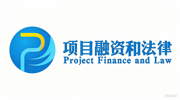Foreign Investment in Clean Energy in Africa Dropped in 2023
2023年非洲清洁能源外资下降
去年流向发展中国家的外国直接投资下降了7%,至8670亿美元,非洲下降了3%。

非洲:清洁能源领域的外国投资推动了可持续发展的势头 贸发会议
In East Africa, FDI inflows fell by 3%, mainly due to an 11% decrease in Ethiopia. However, greenfield projects and international project finance deals increased by more than 30%, indicating better prospects ahead.
According to the reports global foreign direct investment (FDI) fell by 2% to $1.3 trillion in 2023 amid an economic slowdown and rising geopolitical tensions, according to the World Investment Report 2024.
However, the report highlights that the decline exceeds 10% when excluding the large swings in investment flows in a few European conduit economies.
The downturn in project finance affected sustainable development, with new funding for Sustainable Development Goals (SDGs) sectors dropping over 10%, particularly in agrifood and water. This hampers efforts to achieve the 2030 Agenda and calls for urgent policy action to revamp sustainable development finance.
The report emphasizes that business facilitation and digital government solutions can address low investment by creating a transparent and streamlined environment. It highlights significant growth in online services and information portals, saying such tools also support broader digital government development, benefiting developing nations in particular.
UN Trade and Development Secretary-General, Rebeca Grynspan said investment is not just about capital flows. It is about human potential, environmental stewardship and the enduring pursuit of a more equitable and sustainable world.
During the year, the estimated value of international project finance deals in African nations declined by 50% to $64 billion. This follows a 20% drop in 2022.
However, the continent attracted a growing share of global greenfield megaprojects, six of them valued above $5 billion.
Topping the list was a green hydrogen project in Mauritania, a least developed country in Northwest Africa. This project is expected to generate $34 billion in investment, an amount several times greater than the nation’s GDP.
Africa also received more than $10 billion in project finance for wind and solar electricity production, with the largest projects located in Egypt, South Africa, and Zimbabwe.
Value chains for electric vehicles also prompted foreign investments. The largest deals announced included one to establish a $6.4-billion electric vehicle battery manufacturing facility in Morocco.
The main economies investing in the continent, by FDI stock, are the Kingdom of the Netherlands, France, the United States, the United Kingdom, and China.
How subregions fared
Foreign investments in North Africa went down by 12%. In Egypt, mergers and acquisitions fell from the highs of 2022. Morocco also had decreased FDI inflows but performed well in attracting greenfield projects.
FDI flows to West Africa dipped by 1%, with mixed results across countries. The value of greenfield investment was heavily influenced by the announced $34-billion green hydrogen project in Mauritania. Even excluding this outlier, greenfield project values tripled, and the number of projects remained stable.
In Central Africa, FDI declined by 17%. Despite a 56% increase in the number of greenfield projects and a 119% rise in their value, the region was negatively impacted by the downturn in international project finance deals.
In Southern Africa, fluctuations in Angola continued to influence trends. Inflows to South Africa decreased by 43% despite higher mergers and acquisitions activity.
Compared to 2018, FDI inflows expanded for all major regional groupings, most prominently the Economic Community of West African States (ECOWAS), and the Southern African Development Community (SADC).






